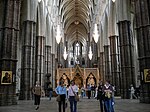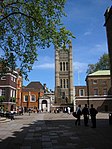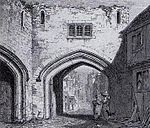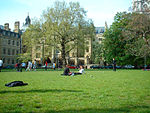Ashburnham House

Ashburnham House is an extended seventeenth-century house on Little Dean's Yard in Westminster, London, United Kingdom, which since 1882 has been part of Westminster School. It is occasionally open to the public, when its staircase and first floor drawing-rooms in particular can be seen to be superb. Ashburnham House took its present form shortly after the Restoration when it was leased by Charles Ashburnham, a friend of Charles II. and subsequently became a London seat for his family that became the Earls of Ashburnham. As the staircase has the characteristics of work by Inigo Jones or his pupil John Webb the design of the house was for many years attributed to them, but now, however, the house as a whole is often attributed to architect William Samwell. The Ashburnham family lived in the house for less than eighty years until John Ashburnham, 1st Earl of Ashburnham sold the lease to the Crown in 1730.
Excerpt from the Wikipedia article Ashburnham House (License: CC BY-SA 3.0, Authors, Images).Ashburnham House
Way of the Monks, London Millbank
Geographical coordinates (GPS) Address Phone number Website Nearby Places Show on map
Geographical coordinates (GPS)
| Latitude | Longitude |
|---|---|
| N 51.498611111111 ° | E -0.12833333333333 ° |
Address
Westminster School
Way of the Monks
SW1P 3PF London, Millbank
England, United Kingdom
Open on Google Maps







